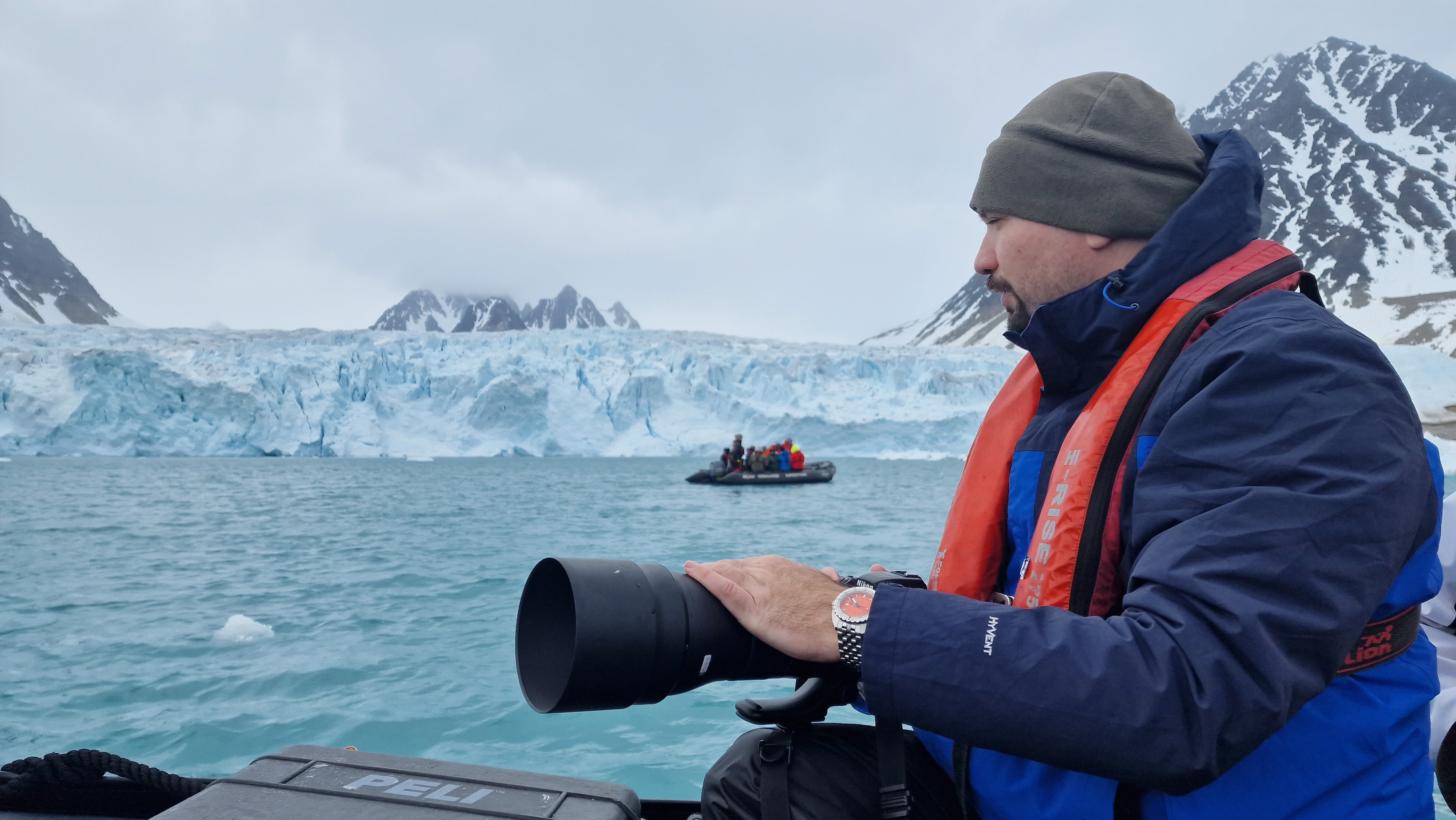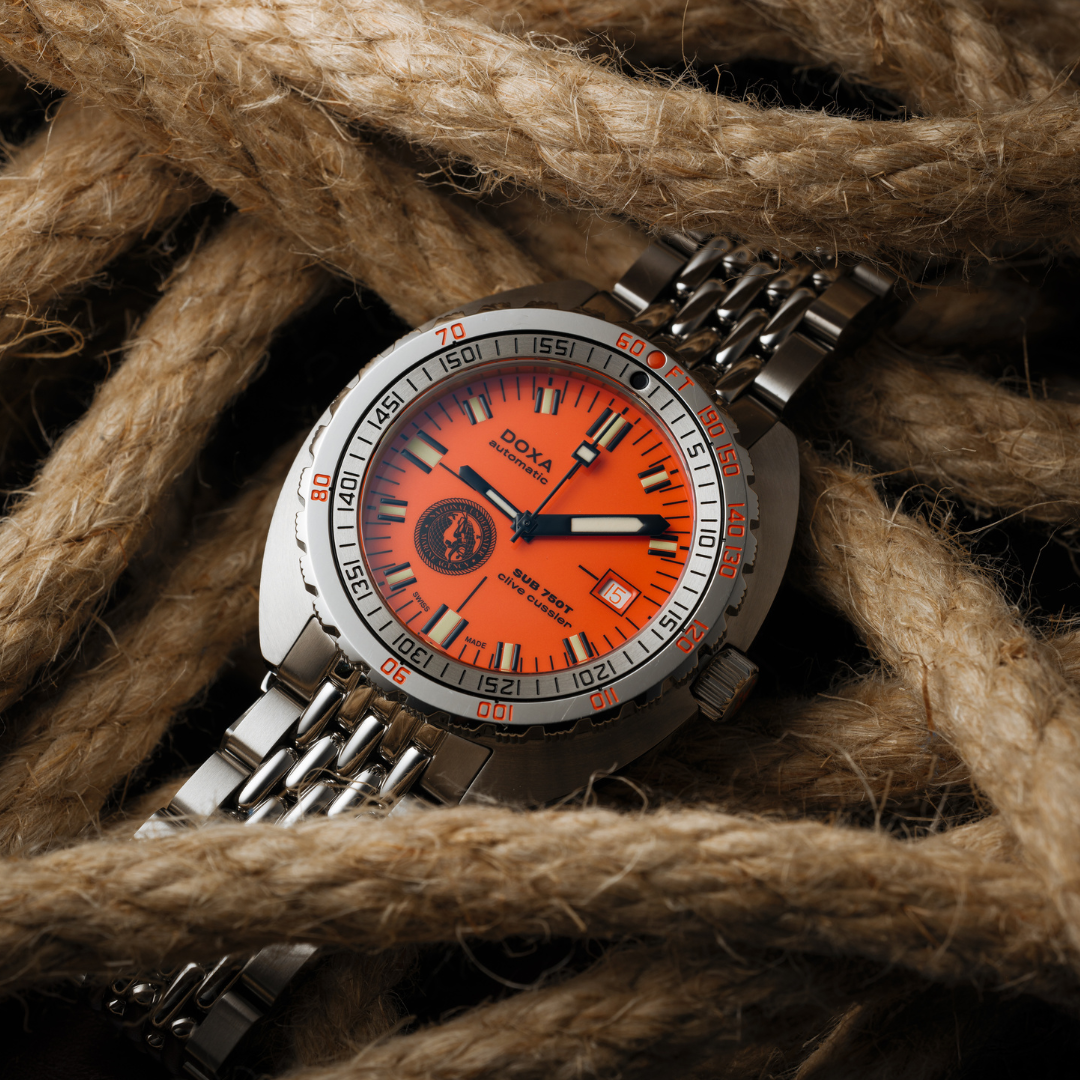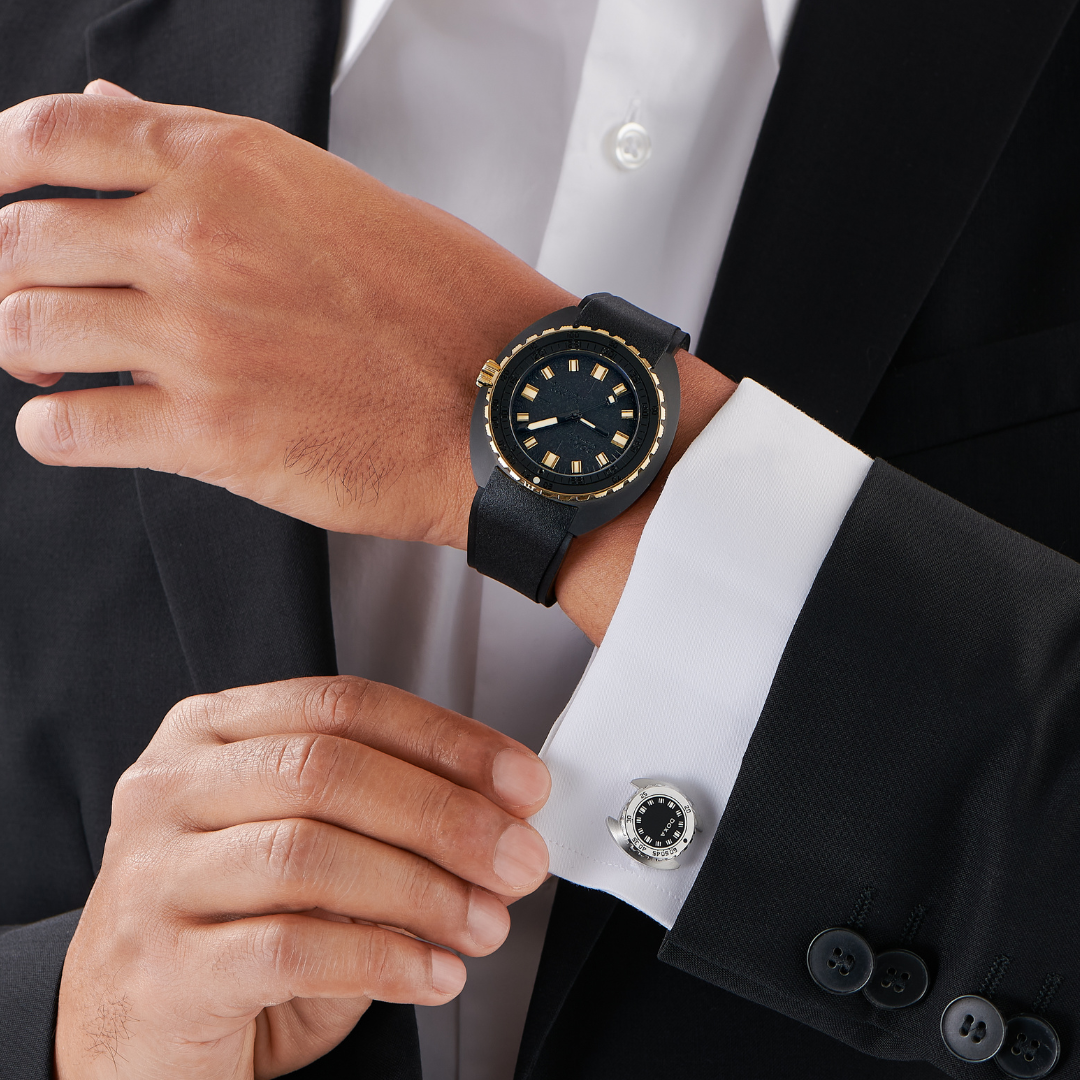
A natural friend - Barna Takats
Barna Takats is one of life’s true adventurers. Born in Dombovar, Hungary, by profession he is a sociologist and he spent his early career working as a strategic media planner for one of the world’s biggest media companies. A wanderlust, that he’d had since childhood, led Barna to buying a one-way ticket to Africa. Upon his arrival in Nairobi, Kenya, he spent some months backpacking around the continent, before settling for a while in Mozambique. Here, two very significant events occurred, that would set the course for the rest of his life; he began his dive master training and met the woman that would become his wife. This signalled the end of his corporate existence and the beginning of his trail of adventures. However, in the ever-changing landscape of this intrepid explorer, there is always one certainty – the DOXA on his wrist.

Following two years working as a diver around Africa and Thailand, Barna Takats and the future Mrs Takats decided to relocate to Mexico. “For the first couple of years we managed a dive shop and then around eight years ago I decided to start my own company. Initially the business offered wildlife trips in our region here in Mexico. Eventually we branched out to offer longer liveaboard diving trips on boats and land-based wildlife tours as far afield as Galapagos, Antartica, Costa Rica, Egypt and The Maldives. Now, I am running between five and fifteen trips annually, all around the world, to places that I love. My next trips will be snorkelling in very different locations; Baja California and then Norway to swim with killer whales in zero-degree waters!” And 2023 seems to be just as busy. This guy never stops, it seems.

With so many miles under his diving belt, it is difficult for Barna to pinpoint his favourite destination. Many places, however, have been inspiring to him in different ways. “One of the most incredible journeys I undertook was to Antarctica in 2019. The weather was incredible and being there is out of this world…literally! You travel for two days through the roughest oceans of the Drake passage to get to Antarctica, but when you get there and you have a good day, it's sunny for 24 hours a day; there is no night. You can see incredible glaciers, icebergs, penguins everywhere and whales popping up; it's mind blowing. I also love the Amazon jungle because wherever you go, there are animals climbing up on the rocks and appearing from behind trees. Under leaves there are snakes, tarantulas, insects and the number of monkeys and variety of birds is incredible. I am also incredibly fond of East Africa. The mountain gorillas and The Impenetrable Forest National Park of Uganda. You hike through thick forest, often for hours, to find a group of gorillas and to be able to spend an hour in their presence is like nothing you could imagine. Usually these gorillas completely ignore you, so you can see their normal behavior, how the babies are playing and how the silverback gorilla takes care of the group. It's a beautiful and very special encounter”.

Some of these adventures must be dangerous? It's a question that Barna gets asked a lot and yet the answer, many find surprising: “I think the most dangerous threat on this planet are human beings. Really! When it comes to wildlife, and you know more or less what you're doing, it’s not as dangerous as you might imagine”. Knowing the habits and behaviors of the animals is key and traveling with a local guide is also important for a safe encounter with the animals of different continents. Says Barna, “Most things are much less dangerous than perceived from afar or when watching it on a television screen. Handling snakes, for example, is not usually a problem if you know what you're doing. If you are on a safari, you don't get out of the car when the lions are there and when you're with gorillas you don't look one directly in the eye. With most animals, if you don't provoke them it's perfectly safe. My most dodgy situations were always involving people; the military, muggings or unwise situations I put myself in!”

When it comes to watches, Barna is straight to the point: “When I'm not wearing the watch, I feel like I'm naked. On certain trips, I have to wear specific watches, for example when I go hiking in the jungle, I wear a GPS enabled watch to track my movements and in the worst case I can use it to find my way back from where I came! When I'm diving, I wear a dive computer and because I really love watches, I only use watch-style versions.” Barna Takats was born at the very end of communist rule in Hungary. When he was six, he remembers little pamphlets or leaflets being put in the post box from which you could order low quality, commercial items. A novel development for the Hungarians. “I remember that I saw a digital watch on one of the leaflets and I fell in love with it. Eventually my parents ordered it for me and that was my first watch. My first Swiss watch was a dive-style quartz timepiece and I loved that first analog dial layout.” Eventually, this love of watches led to Barna wanting an automatic watch: “The first time I put on a watch and I knew that it was automatic, working from the energy from my wrist, I was hooked. This centuries old technology is fascinating and every single time I wear it, it feels special.” Like many watch enthusiasts, his first encounter with professional dive watches was on the pages of adventure books, with the hero wearing a watch in all his adventures. “In one of my favorites, the main character was wearing an orange DOXA dive watch. I Googled it and then saw one and knew I had to have one for my own adventures. I fell in love with it the whole history of the DOXA SUB, its place on the wrist of the hero of my favorite books and how it was developed for use with the Swiss Commandos.”
As a professional diver, the bezel of the SUB 300 is more than just an aesthetic coolness; to Barna, it’s a valuable back up for his wrist-mounted dive computer. “The No Deco diving bezel is something special, because as a diver you learn about decompression diving tables, and I grew up using these charts. The watches have a very strong historical reference for me as a diver, with key diving technology built in such as the helium escape valve and the importance of the orange dial that was pioneered by DOXA, due to it being the most visible of all the dial hues that were tested. The orange color has since then been important for diving equipment, such as fins and dry suits. This is a watch that first I heard about through books that I enjoyed reading, then I began understanding the historical importance of it, combined with the technical prowess and amazing aesthetics, it slowly became the timepiece that I wanted to own and use.” And use it he does - all over the world for all his adventures and even when using his GPS or dive computer, he’s sure to strap his DOXA to the other wrist!

His love for the brand led to a visit to the DOXA factory in Switzerland. Whilst on an expedition in Europe Barna took the opportunity to visit the team in Biel. “I had an expedition to the Artic to Svalbard, a group of islands north of Iceland, to look for walruses, polar bears and whales. Whilst I was in Europe, I was lucky enough to visit the DOXA headquarters. It was an excellent experience, where I met the team and got to see some top-secret projects, which have now been released like the unlimited Army edition, and got to handle some historical pieces from the archive. Myself and the DOXA team had an amazing lunch together and it was the beginning of a very special friendship with the brand.”

To follow Barna Takats’ adventures - @barnatakats



